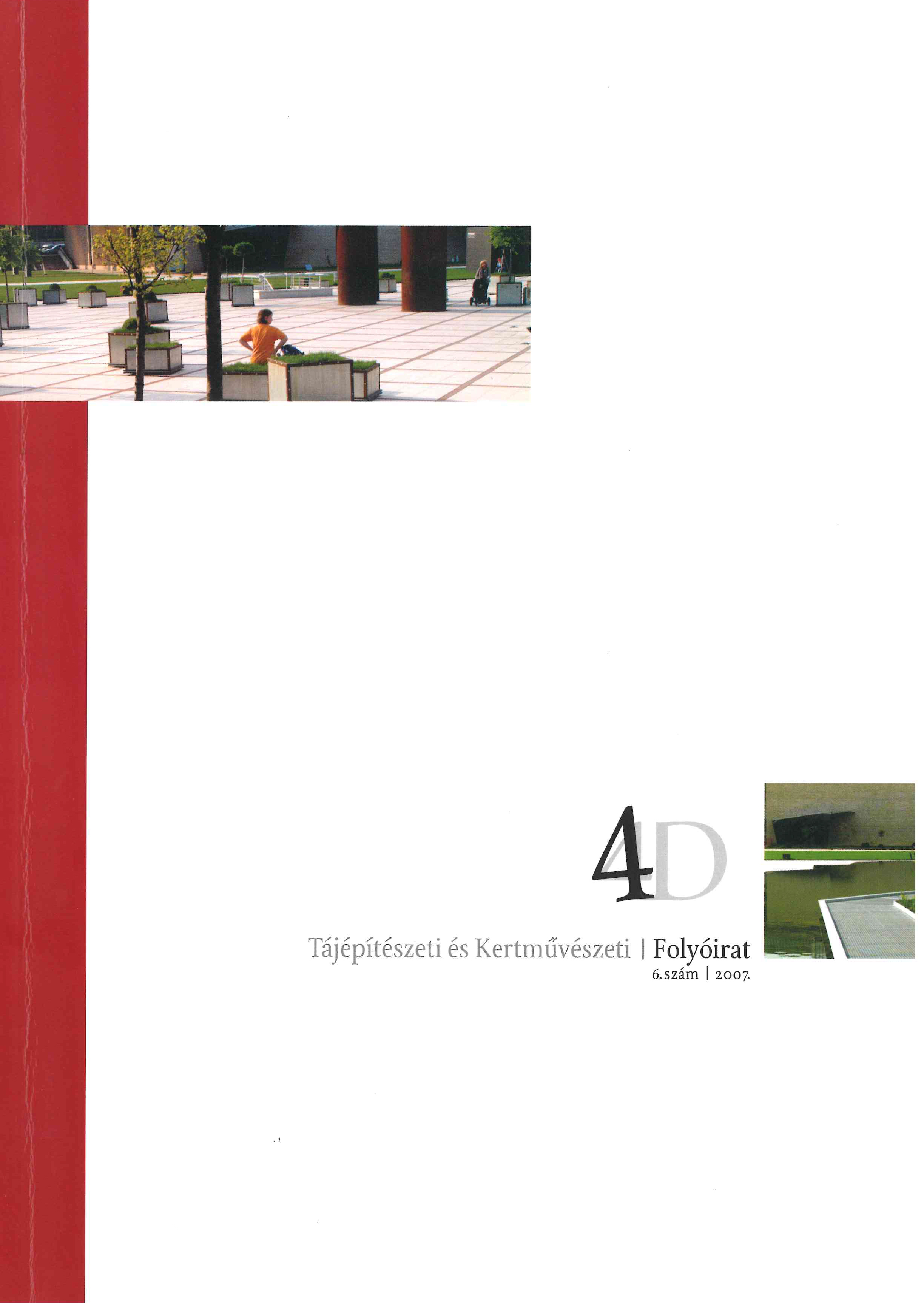New methodology for designation of visually important areas in the frame of national structural plan
Keywords:
methodology, visually important areaAbstract
The paper gives a broad overview about the delineation methodology of the visually-aesthetically important designated areas in the revision of the National Structural Plan.
References
Boulding, K. E.: (1993): The Economics of the Corning Spaceship Earth, Valuing the Earth ed. Hermán E. Daly and Kenneth N. Towsend, The MIT Press Cambridge, Massachusetts, London, England,
lan D. Bishop and Dávid W. Hulse (1994): Prediction of scenic beauty using mapped data and geographic information Systems Landscape and Urban Planning, Volume 30, Issues 1-2, October 1994, Pages 59-70
Eckart Lángé (1994): Integration of computerized visual simulation and visual assessment in environmental planning Landscape and Urban Planning, Volume 30, Issues 1-2, October 1994, Pages 99-112
Gary R. Clay and Terry C. Daniel (2000): Scenic landscape assessment: the effects of land management jurisdiction on public perception of scenic beauty Landscape and Urban Planning, Volume 49, Issues 1-2, 25 May 2000, Pages 1-13
Eckart Lángé and lan Bishop (2001): Our visual landscape: analysis, modeling, visualization and protection Landscape and Urban Planning, Volume 54, Issues 1-4, 25 May 2001, Pages 1-3
Terry C. Daniel (2001): Whither scenic beauty? Visual landscape quality assessment in the 21 st century Landscape and Urban Planning, Volume 54, Issues 1-4, 25 May 2001, Pages 267-281
Simon Bell (2001): Landscape pattern, perception and visualisation in the visual management of forests Landscape and Urban Planning, Volume 54, Issues 1-4, 25 May 2001, Pages 201-211
Szlávik J., Cs. Nagypál N., Csete M., (2005): A tájkép érték 36 Tájépítészeti és Kertművészeti I Folyóiratmegjelenése a környezetértékelés során (kézirat)
Stephen M. Ervin (2001): Digital landscape modeling and visualization: a research agenda Landscape and Urban Planning, Volume 54, Issues 1-4, 25 May 2001, Pages 49-62
Ása K. Ode and Gary L.A. Fry (2002): Visual aspects in urban woodland management Urban Forestry & Urban Greening, Volume 1, Issue 1, 2002, Pages 15-24
Guidelines for Landscape and Visual Impact Assessment 2nd edition (2002), Landscape Institute Arriaza M. , J. F. Canas-Ortega , J. A. Canas-Madueno and P. Ruiz-Aviles (2004):
Assessing the visual quality of rural landscapes Landscape and Urban Planning, Volume 69, Issue 1, 15 July 2004, Pages 115-125
Kollányi L., Csemez A., (2006): Országos Területrendezési Tervről szóló 2003. évi XXVI. tv.módositása - Tájképvédelmi terület övezetének szabályozása, BCE- Tájtevezési és Területfejlesztési Tanszék (kézirat)
EIAO Guidance Note No. 8/2002 http://www.epd.gov.hk/eia/hb/materials/GN8.doc.
S. Káplán, R. Káplán and J. S. Wendt. (1972) Rated preference and complexity fór natural and urban visual material. Perception and Psychophysics, 12, 354-356.
VÁTI Magyar Regionális Fejlesztési és Urbanisztikai Közhasznú Társaság, Győr-Moson-Sopron megye területrendezési terve, 2005
VÁTI Magyar Regionális Fejlesztési és Urbanisztikai Közhasznú Társaság , Nógrád megye területrendezési terve 2005.
Kollányi L., Csemez A., Módosítási javaslat az Országos Területrendezési Tervről szóló 2003. évi XXVI. tv.-hez - Tájképvédelmi terület övezetének szabályozása, BCE Tájtervezési és Területfejlesztési Tanszék, 2006
Downloads
Published
Issue
Section
License
Copyright (c) 2024 Kollányi László

This work is licensed under a Creative Commons Attribution-NonCommercial-NoDerivatives 4.0 International License.
A folyóirat Open Access (Gold). Cikkeire a Creative Commons 4.0 standard licenc alábbi típusa vonatkozik: CC-BY-NC-ND-4.0. Ennek értelmében a mű szabadon másolható, terjeszthető, bemutatható és előadható, azonban nem használható fel kereskedelmi célokra (NC), továbbá nem módosítható és nem készíthető belőle átdolgozás, származékos mű (ND). A licenc alapján a szerző vagy a jogosult által meghatározott módon fel kell tüntetni a szerző nevét és a szerzői mű címét (BY).



